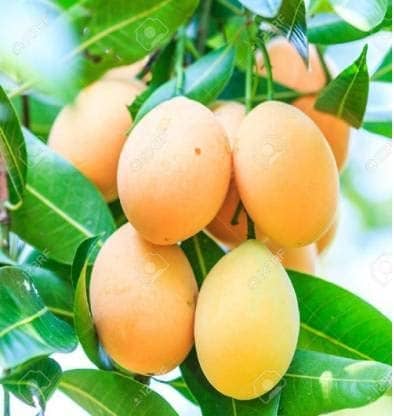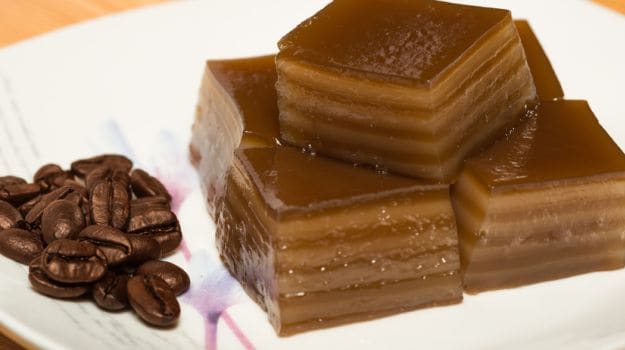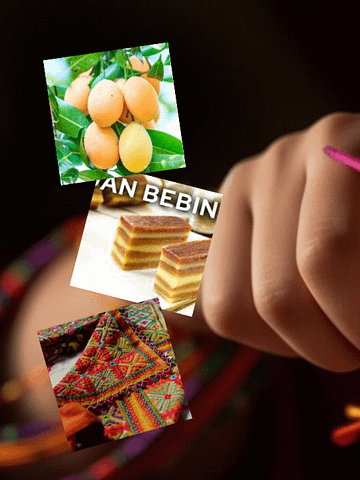India’s cultural and agricultural heritage is a treasure trove of unique products and crafts, some of which have recently been recognized with the prestigious Geographical Indication (GI) tag. This article will take an in-depth look at the historical significance, cultural relevance, and benefits of GI tags for products like the ‘Goa Mankurad Mango,’ the delectable ‘Goan Bebinca’ dessert, and the exceptional crafts from Rajasthan and Uttar Pradesh.
Unveiling the Geographical Indication (GI) Tag
The Geographical Indication (GI) tag is a certification that identifies products originating from specific geographical regions with distinct qualities or characteristics. This tag serves as a mark of authenticity and ensures that only authorized producers from the designated region can use the product’s name, safeguarding traditional knowledge and skills.
Goa Mankurad Mango – The ‘Queen of Goan Desserts’
The ‘Goa Mankurad Mango’ has been a symbol of Goan pride and cultural heritage for centuries. Its unique name, which originated from the Portuguese word ‘malcorada,’ meaning ‘poor colored,’ evolved into ‘mankurad aamo’ in the local Konkani language. The All Goa Mango Growers Association played a pivotal role in securing the GI tag for this beloved fruit, preserving its authenticity and promoting its unique identity.

Historical Significance and Cultural Relevance
The Goa Mankurad Mango has been cultivated in Goa for generations, and its significance goes beyond just being a delectable fruit. It is deeply woven into Goan traditions, festivals, and cuisine, making it an essential part of the local culture. The mango’s distinct taste and texture make it a favorite among both locals and visitors, elevating its cultural importance.
Safeguarding and Economic Impact
The GI tag for the Goa Mankurad Mango ensures protection against imitation and counterfeiting, safeguarding the unique qualities that set it apart from other mango varieties. By preserving the traditional knowledge of mango cultivation and encouraging sustainable agricultural practices, the GI tag contributes to the economic growth of local farmers and cultivators.
Goan Bebinca – A Layered Delight
Goan Bebinca is a traditional layered dessert that has earned its place as the ‘queen of Goan desserts.’ Its rich flavor and delicate texture make it a sought-after treat for special occasions and festivities. With the GI tag, Goan Bebinca receives official recognition and protection, which benefits the local communities involved in its preparation.

Cultural Heritage and Culinary Artistry
Goan Bebinca is deeply rooted in Goan culture and culinary traditions. The dessert’s complex preparation process, which involves layering multiple ingredients like coconut milk, eggs, sugar, and ghee, showcases the region’s culinary artistry and expertise. It has been passed down through generations, making it a cherished part of Goan celebrations.
Elevating Market Value
The GI tag not only protects the authenticity of Goan Bebinca but also enhances its marketability. With official recognition, the dessert gains a competitive edge in the market, attracting more attention from tourists and food enthusiasts alike. This increased demand for Goan Bebinca can lead to economic growth for the local communities involved in its production.
Crafts from Rajasthan and Uttar Pradesh
Apart from culinary delights, the GI tag was awarded to various crafts from Rajasthan and Uttar Pradesh, celebrating the exceptional artistry and craftsmanship of these regions.
1. Jalesar Dhatu Shilp – Artistry in Metal Craft
Jalesar, a town in Uttar Pradesh, is renowned for its metal craft, known as ‘Jalesar Dhatu Shilp.’ The GI tag acknowledges the exquisite workmanship and artistic finesse displayed in the creation of metal artifacts, which are a reflection of the rich cultural heritage of the region.

2. Udaipur Koftgari Metal Craft – A Regal Legacy
Udaipur’s koftgari metal craft involves inlaying gold or silver on steel, creating ornate designs on weaponry and other artifacts. This art form is an emblem of opulence and grandeur, and the GI tag adds recognition and protection to the city’s rich royal legacy.

3. Bikaner Kashidakari Craft – Vibrant Embroidery
Bikaner’s Kashidakari Craft involves intricate embroidery work with colorful threads, adorning fabrics and textiles with breathtaking designs. The GI tag provides protection to this traditional craft, promoting its uniqueness in the global market.

4. Jodhpur Bandhej Craft – Captivating Patterns
The ‘Bandhej’ craft of Jodhpur, also known as tie and dye, produces vibrant patterns on fabrics. The GI tag recognizes the artistry and skill of the craftsmen behind these captivating designs, preserving the cultural heritage of the region.

5. Bikaner Usta Kala Craft – Gilded Elegance
Bikaner’s Usta Kala Craft involves adorning camel leather with intricate golden-hued designs. This unique art form now gains recognition and protection through the GI tag, preserving its cultural heritage and promoting its market value.

Legal Framework and Obligations
The Geographical Indications of Goods (Registration and Protection) Act, 1999, plays a crucial role in ensuring the registration and protection of geographical indications relating to goods in India. This act aligns with the WTO Agreement on Trade-Related Aspects of Intellectual Property Rights (TRIPS), providing a legal framework to safeguard the traditional knowledge and cultural heritage associated with GI-tagged products. The GI tag, valid for ten years, empowers local communities and artisans, offering economic incentives to preserve and continue their traditional practices.
The GI tags awarded to the ‘Goa Mankurad Mango,’ ‘Goan Bebinca,’ and crafts from Rajasthan and Uttar Pradesh are a testament to India’s rich cultural heritage and unique craftsmanship. These tags not only protect the authenticity of these products and crafts but also elevate their market value, contributing to the sustainable growth of local communities. By preserving traditional knowledge and promoting cultural significance, GI tags celebrate India’s diverse heritage on the global stage.
FAQs
1. What is the significance of a GI tag?
A GI tag certifies the authenticity and origin of a product, protecting it from imitation and preserving its cultural heritage.
2. How does the GI tag benefit local communities?
The GI tag provides economic incentives to local communities and artisans, promoting their traditional practices and contributing to sustainable development.
3. Which products were awarded the GI tag from Rajasthan?
The products awarded the GI tag from Rajasthan include ‘Jalesar Dhatu Shilp,’ ‘Udaipur Koftgari Metal Craft,’ ‘Bikaner Kashidakari Craft,’ ‘Jodhpur Bandhej Craft,’ and ‘Bikaner Usta Kala Craft.’
4. Who filed the application for the Goa Mankurad Mango?
The All Goa Mango Growers Association, Panaji, filed the application for the Goa Mankurad Mango.
5. How long is the GI tag valid?
The GI tag is valid for ten years.
Source:



